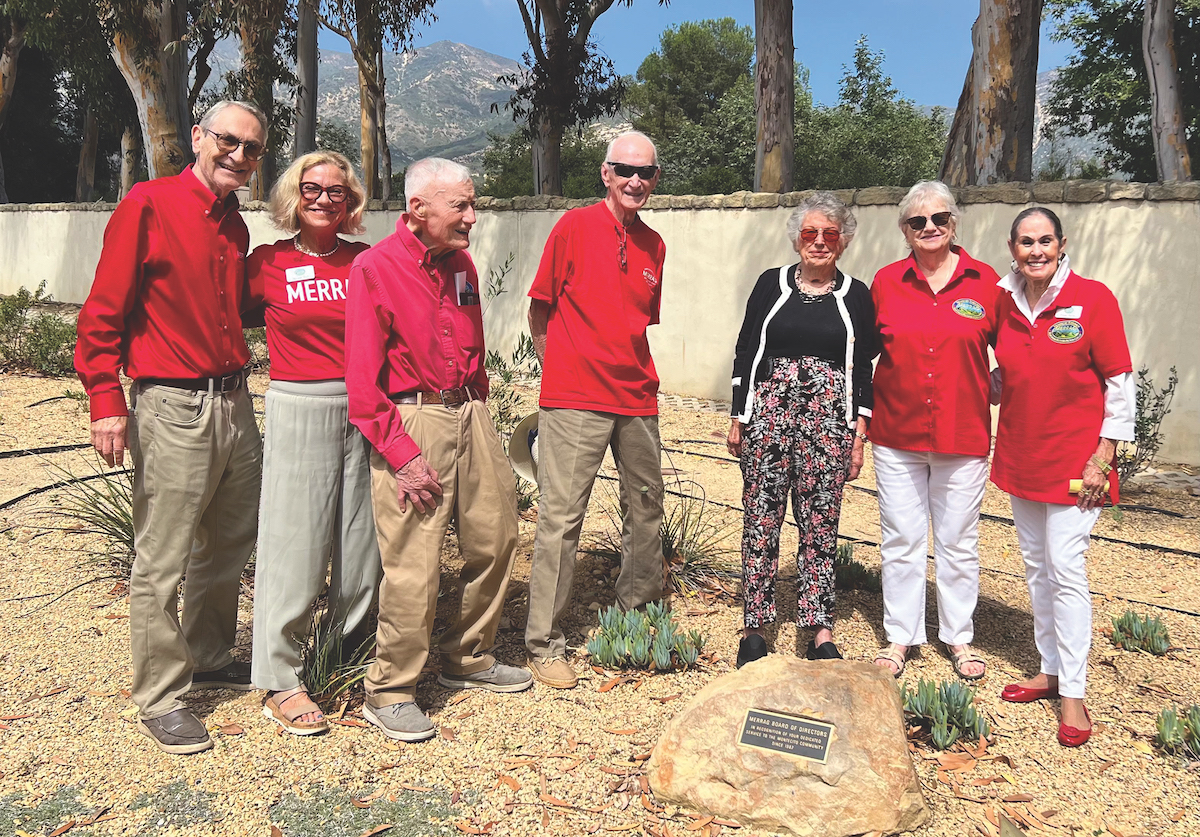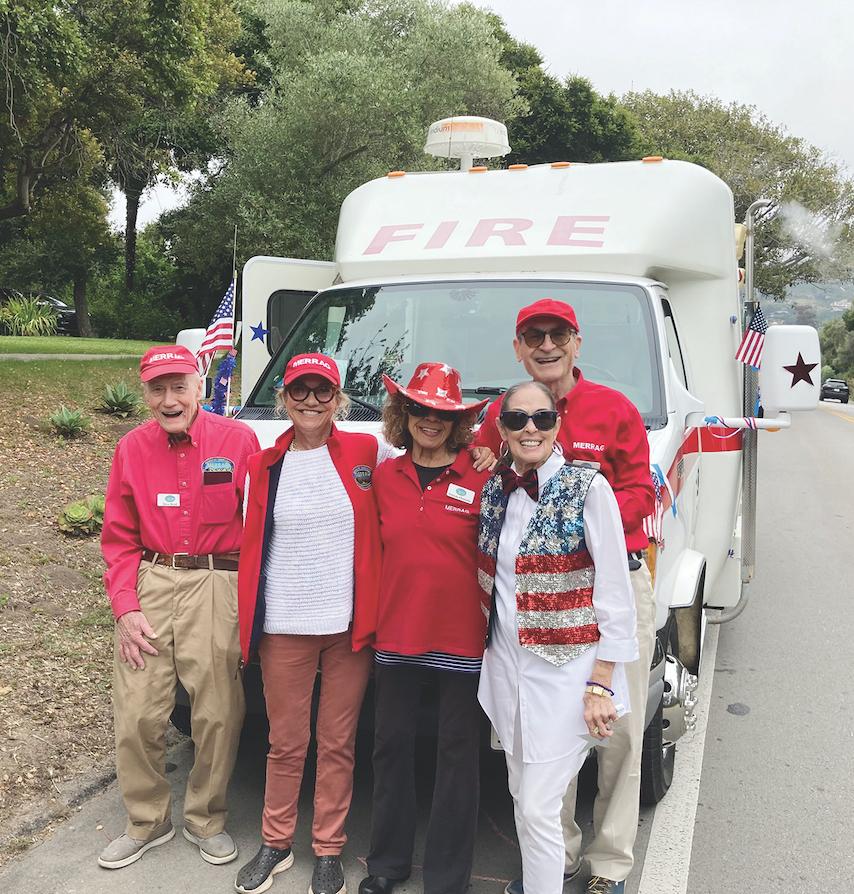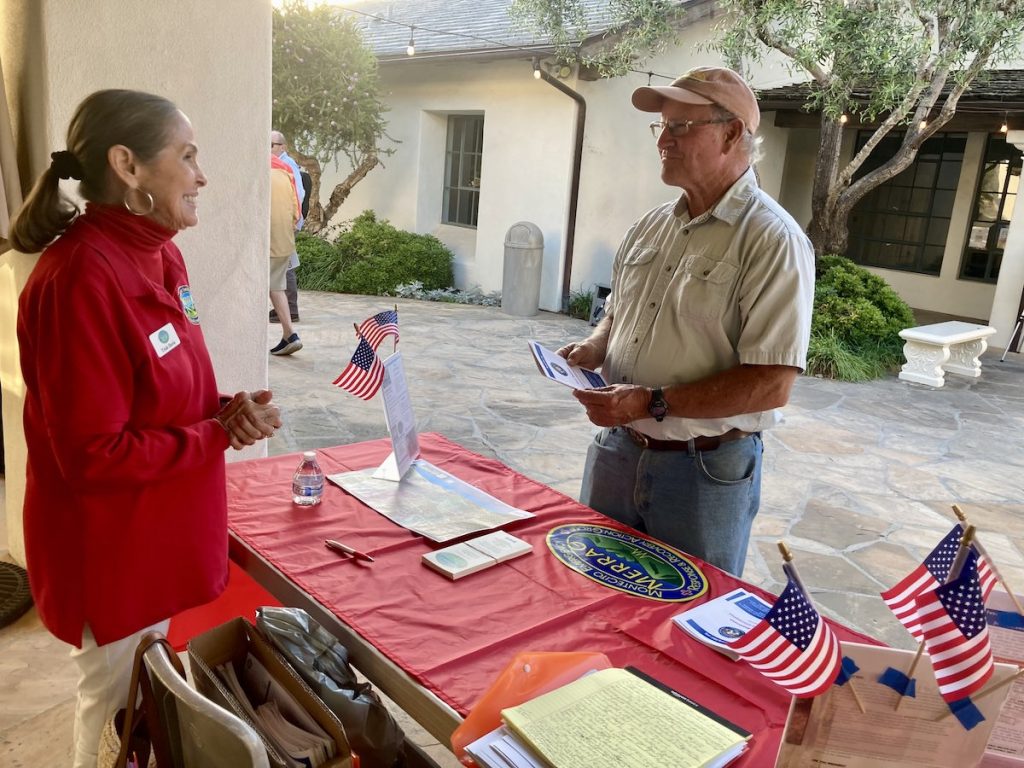M.E.R.R.A.G.

When M.E.R.R.A.G. was formed in 1987 as Montecito Emergency Response and Recovery Action Group, the uber-local organization started serving a vital purpose as the Montecito Fire Protection District’s neighborhood eyes and ears through a cohort of trained, embedded local volunteers augmenting our first responders’ efforts to keep the community safe. Growing out of a newly formed FEMA program, M.E.R.R.A.G. was created to follow, but also expand upon, the curriculum used by CERT (FEMA’s Community Emergency Response Training) to create a cadre of ready volunteers who live and/or work in the Montecito area and are prepared to respond to a community disaster during the critical first 72 hours
following an event.
That’s still the mission of the uber-local nonprofit, even though times have changed. Back in the late 1980s, mobile phones barely existed, as the days of communication on demand with everyone, anywhere, anytime, were still far in the future. The contemporary ability to search for information on Google, or to get pinpoint weather reports – let alone engage in instant messaging from a device on your wrist – might seem to obviate the need for such a community organization.

What the volunteers largely do nowadays is staff the local trailheads at entrances to offer up-to-the-minute information during Red Flag extreme fire hazard conditions and staff the information kiosk at the Upper Village Green when very hazardous weather conditions are forecast. That might not seem like much, but even in these modern times, M.E.R.R.A.G. still serves a vital purpose for Montecito.
“It’s a valid question in this age of instant communications to wonder about the relevance of M.E.R.R.A.G.’s in-person communications,” said longtime board member David Boyd. “But the truth is that in-person contact between our volunteers and members of the public is more effective than electronic communications – which may not be available in emergencies – because visual contact between speakers adds context, completeness, and value to what is communicated.”
In other words, while people can get the warning alarms on their cell phones, and research weather conditions for their own neighborhood at a moment’s notice, there truly is no substitute for the personal touch.
That effort begins long before disaster strikes or other community emergencies arise when the organization’s team assists as requested with the set up and operation of the Fire District’s Emergency Operations Center. M.E.R.R.A.G.’s team of local embedded volunteers primarily emphasizes readiness. That includes training its volunteers and community members according to the national CERT program’s six-module syllabus, augmented with additional modules customized for the Montecito neighborhood.
M.E.R.R.A.G. also maintains its own system of two-way radios with units embedded in local neighborhoods and associations – where the operators are well trained and experienced – so that during an emergency when there may be a failure of the telephone systems, rapid and accurate communications that are vital in providing prompt rescue response are available. The organization has a substantial UHF radio system that reaches throughout Montecito and is further enhanced by a radio “repeater” located high on a Montecito hilltop that has a clear view of our entire area ensuring that no communications are lost. M.E.R.R.A.G. radio carriers are always able to be in touch with emergency service providers.
Those are the reasons why M.E.R.R.A.G. tweaked what its acronym stands for to substitute Readiness and Radio for Response and Recovery.
Its focus on personal touch is still paramount.
“The radio operators make their presence known to their local community,” explained treasurer Bill Vollero. “They’re the point person for the neighborhood for disseminating information in the event of an emergency, and providing a neighborhood-level view for transmission to the responders.”

But readiness, Vollero said, also involves getting in front of the community citizens and being a resource, especially in avoiding denial and preparing for possibilities that might arise.
“We’re at various community events. We talk to the merchants and have community walks to restaurants and the shopping centers, where we wear our red shirts and engage people with pamphlets in our hands to distribute. We’re pressing the flesh, approaching these vendors and businesses and asking if they think about possibilities of emergencies, are they organized to respond, and do they know what to put in a readiness bag. These community walks are trying to bridge that gap and get people to penetrate their denial.”
That in-person connection also happens when M.E.R.R.A.G. mans the trailheads during Red Flag emergencies, Voller said.
“Besides giving everybody a bottle of water, we’re there to apprise them of what the latest information is and ask them to be attentive and aware and report anything suspicious in terms of people lighting campfires up in the foothills,” he said.
Boyd emphasized how something so simple can make a big difference.
“The hiker may not know a Red Flag condition even exists or how to call for information or get help if they need it,” he said. “We’re there to answer questions, but the volunteer also observes if the hiker might actually be doing things that are unsafe, like smoking on the trail or wearing flip-flops.”
At the kiosks when big rains are expected, volunteers will warn people about creeks overflowing and to avoid driving in flooded waters, Voller said.
“If you can’t see the curbs, don’t drive down that street, for example,” he said.
M.E.R.R.A.G.’s current ambition is to be able to purchase a new, smaller van to replace the lumbering 40-year-old model that often can’t fit into narrow village streets during emergencies.
“The van is a place to provide information and assurance, as well as using our generator to provide comforts like charging a cell phone if the power is down, or just a hot cup of coffee,” Voller said. “And in our everyday work it allows us to bring our equipment and tables and supplies right to the site.”
The $60,000 cost might seem like a minor expense, but unlike the vast majority of nonprofits, M.E.R.R.A.G. is funded entirely by community contributions.
“Having a more nimble and reliable van would let us get wherever we need to be,” Voller said.
Visit https://merrag.org for more information







You must be logged in to post a comment.